
© Foteini Christofilopoulou. (Click image for larger version)
Whelan/Watson – Wendy Whelan and Edward Watson
Other Stories: First and Wait, Dance me to the end of love, Short Ride Out, The Song We Share, The Ballad of Mack and Ginny
London, Linbury Studio Theatre
9 July 2015
Gallery of pictures by Foteini Christofilopoulou
www.wendywhelan.org
www.roh.org.uk
Given that George Balanchine opined ‘Ballet is woman’, it is surprising that Wendy Whelan (New York City Ballet principal for 23 years until her retirement) is less fascinating than Edward Watson (Royal Ballet principal for the last 10 years) in their new collaboration, Other Stories.
They had first worked together for Christopher Wheeldon’s short-lived company, Morphoses (2007-2010). Plans to get together again had been stymied by their transatlantic schedules until now, in a co-production between the Royal Ballet and New York City Center. The result is a kind of concert recital, an experiment with how they’re seen as mature dancers by five very different choreographers.
The 65-minute show takes place before sliding wooden screens that conceal musicians at the back of the otherwise stark stage. Set and costume designs are by Jean-Marc Puissant, lighting by Bruno Poet. The focus is on the exceptional skills and bodies of the two dancers, differently trained but belonging to the same classical/neo-classical tradition.
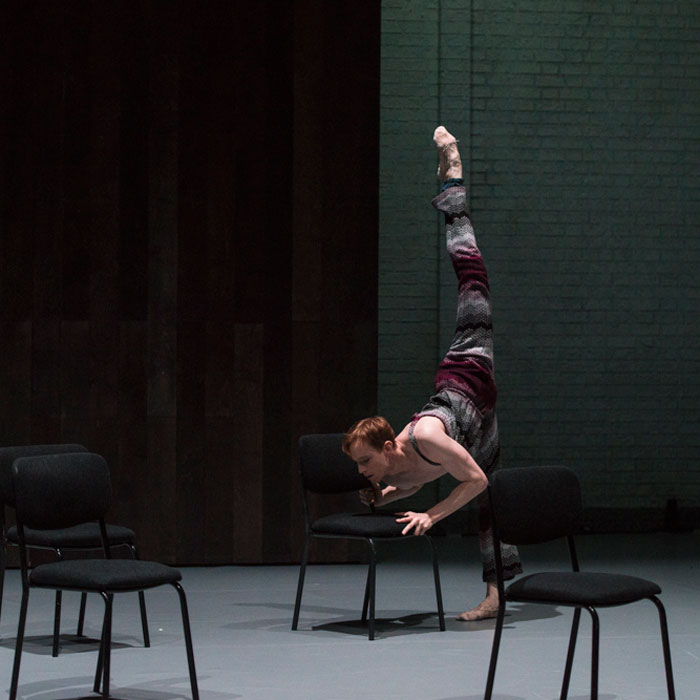
© Foteini Christofilopoulou. (Click image for larger version)
Although both are interested in recreating themselves as contemporary dancers at this phase in their careers, their physiques have been finely tuned by their ballet training into expressive instruments. Thus, when Watson enters in striped warm-up tights in Javier de Frutos’s opening First and Wait, he stretches a leg high into the air before sitting on a chair. It’s what ballet dancers do – their body language is not that of normal people.
When Whelan enters in practice clothes, a conspiracy develops between them as a clock ticks imperatively on the back wall. They while away the time in the rhythms of their relationship as performance partners: she whispers in his ear, he blocks her from sitting down, she teases him by doing the same to him. De Frutos makes us aware how instinctively elegant they are, even when they sulk and slump. He also knows what a cliché chairs can be in contemporary choreography, so it’s fun when Watson stacks them up or plonks Whelan on his lap as if she were one of them.
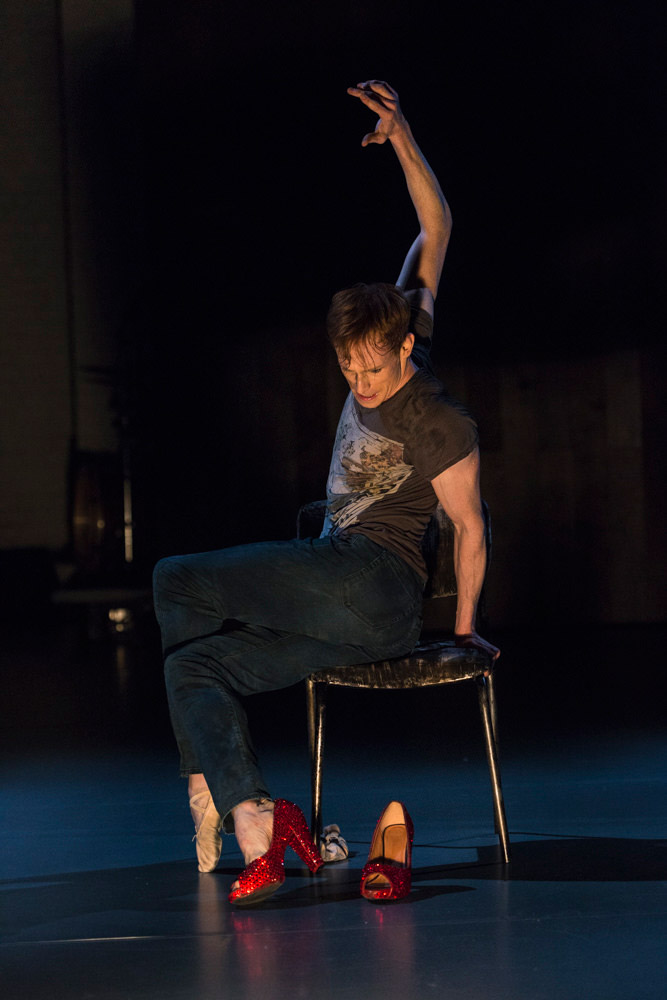
© Foteini Christofilopoulou. (Click image for larger version)
The ticking clock is a prelude to the rest of the show, which proceeds without breaks. Watson dances a solo devised by Arlene Phillips to a sequence of songs with ‘dance’ in their titles, ending with Leonard Cohen’s ‘Dance me to the end of love’, the title of the piece. Bev Lee Harling sings the lyrics while Ivo de Greef plays the piano. When the music changes to a Telemann composition that sounds much like Bach, it’s evident that Watson, in T-shirt and jeans, is in the same state of despair as Roland Petit’s Le Jeune Homme et la Mort.
Phillips’s programme note states that Watson’s character is a once famous dancer remembering the woman he loved. In reliving ‘the relationship that destroyed him’, he could be railing against his obsession with dance rather with a woman. Watson is expert at revealing a tortured soul, even when the symbol of his agony turns out to be an ironic pair of sequinned ruby-red high heels.

© Foteini Christofilopoulou. (Click image for larger version)
So he’s had more to express than Whelan in her solo, Short Ride Out, by Annie-B Parson (who has her own company in the United States). There’s a complicated programme note about ‘destabilising our sense of sequencing’ while celebrating Whelan’s virtuosity. But 48-year-old Whelan is made to look girly in a mini-shift with lace panels and a pair of red slippers she puts on and off. She skips about quixotically, flicking her fingers and repeating riffs on rhythmic dance phrases, with Dave Price bashing a set of percussion instruments behind her in a composition by Julia Wolfe. When Whelan marches out proudly, you wonder why.
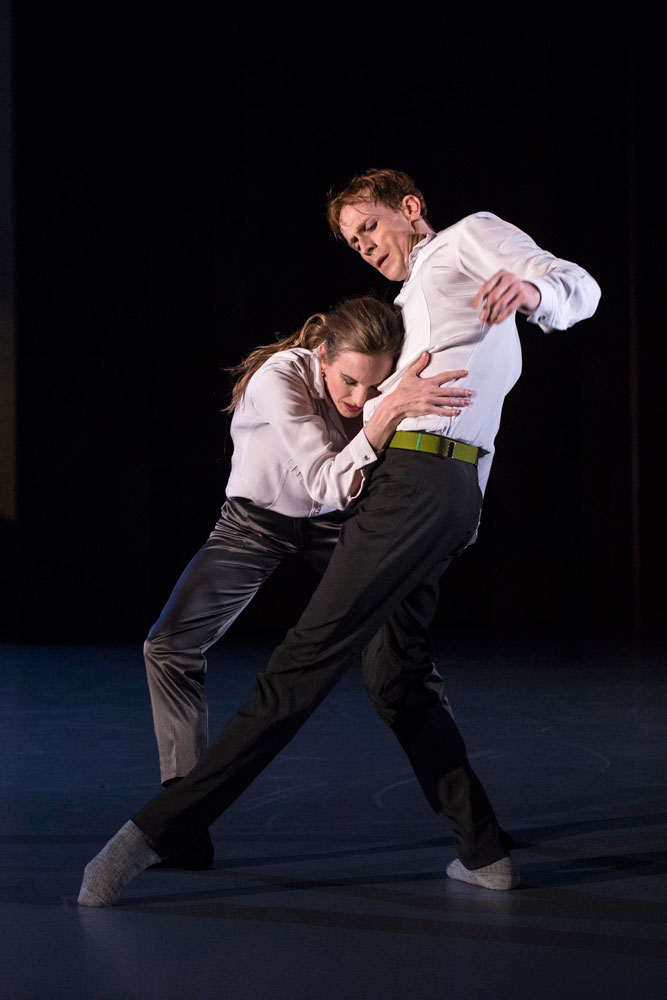
© Foteini Christofilopoulou. (Click image for larger version)
After a musical interlude credited to Daniel Peppé and Jon Collyer, with Watson briefly at the piano, Whelan reappears in shirt and trousers to dance a dreamy duet, The Song We Share, by Quebecois choreographer Danièle Desnoyers. The partnering is so intimate that Watson seems to be moulding Whelan, until they separate to assert themselves. They dance to a poignant piano melody (by Philippe B) accompanying plaintive lyrics in French. A charming reflective piece, it is soon overshadowed by Arthur Pita’s tango for two, The Ballad of Mack and Ginny, based on characters from the Weill/Brecht Threepenny Opera.
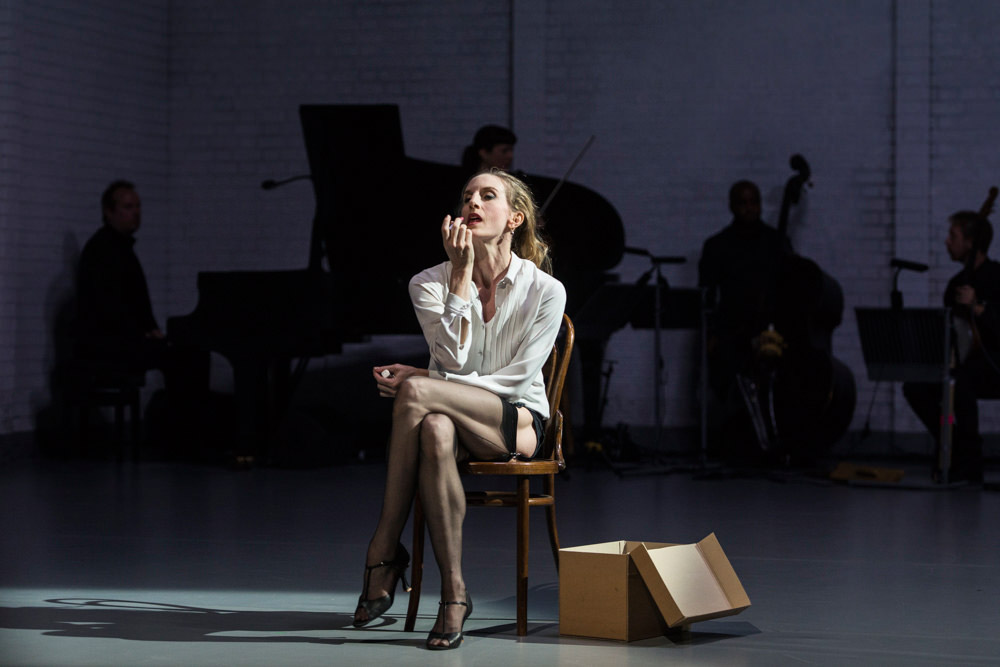
© Foteini Christofilopoulou. (Click image for larger version)
Frank Moon, Pita’s frequent collaborator as composer and music director, has arranged Kurt Weill’s music into a quintet that includes Moon himself on saw, banjo and guitar.
Whelan and Watson make themselves up before us as Mack the Knife and his prostitute girlfriend Ginny/Jenny. They are preparing for one of those sado-masochistic tangos that are bound to end up with someone (or both) getting badly hurt.
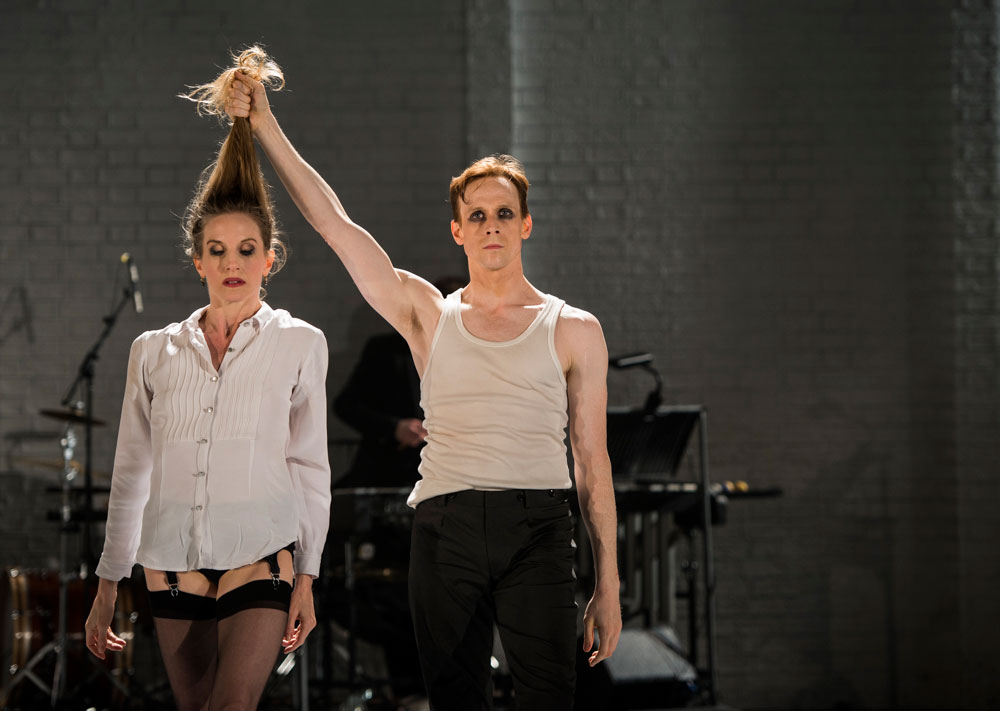
© Foteini Christofilopoulou. (Click image for larger version)
Whelan lets Watson grab her by the hair and slash off her shirt. She has a powerful back for such a slender, sinewy dancer, as does Watson, once she’s stripped him off in return. He’s more androgynous than she, more like David Bowie with his haunted face and acrobat’s body. Together, they explore the Argentinian tango tropes of passion and aggression, violence and vulnerability. She flicks her legs like lethal knives around him, a black widow spider. He has his dagger ready even as he grips her to him.
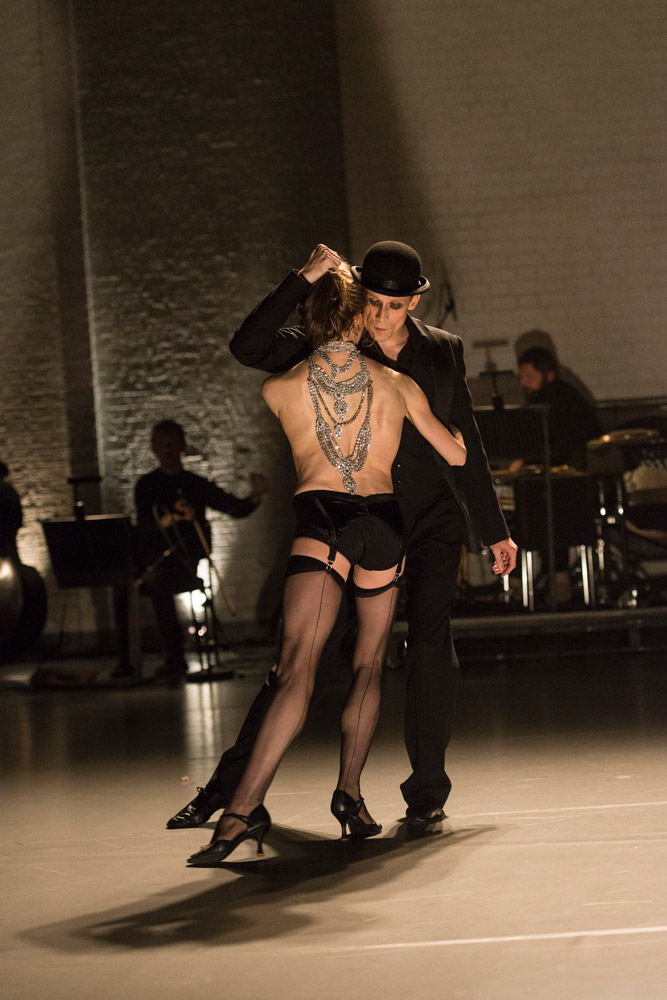
© Foteini Christofilopoulou. (Click image for larger version)
They dance the tango incredibly well – for ballet dancers – coached by three credited tutors as well as by Pita. But they can’t match the tango virtuosos who have performed in London in recent years, the couples who spend their lives dancing with each other even after they’ve divorced. No, the enjoyment lies in watching these two classically-trained dancers relishing being outrageous low-life partners in a devastating finale to their joint programme.












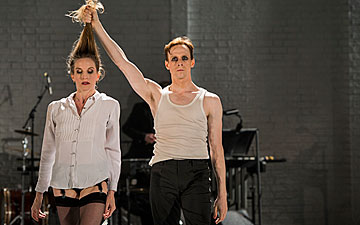
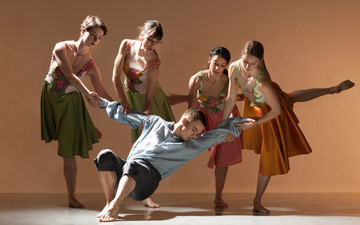

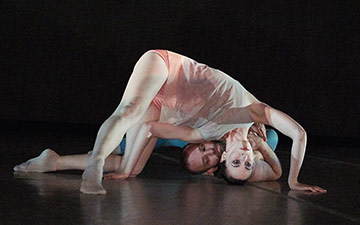

You must be logged in to post a comment.